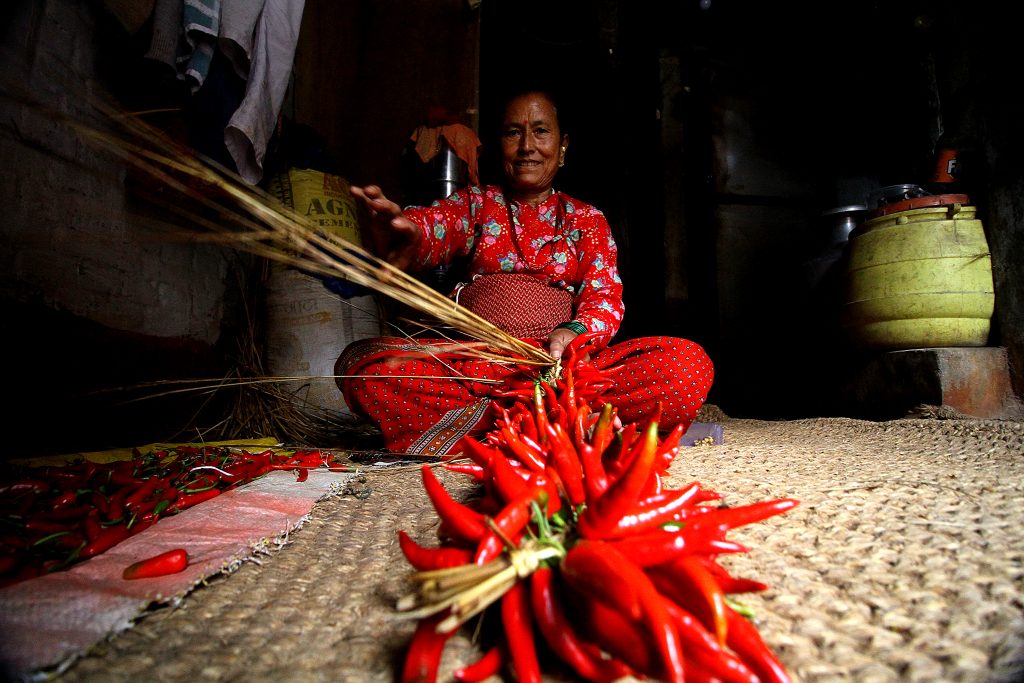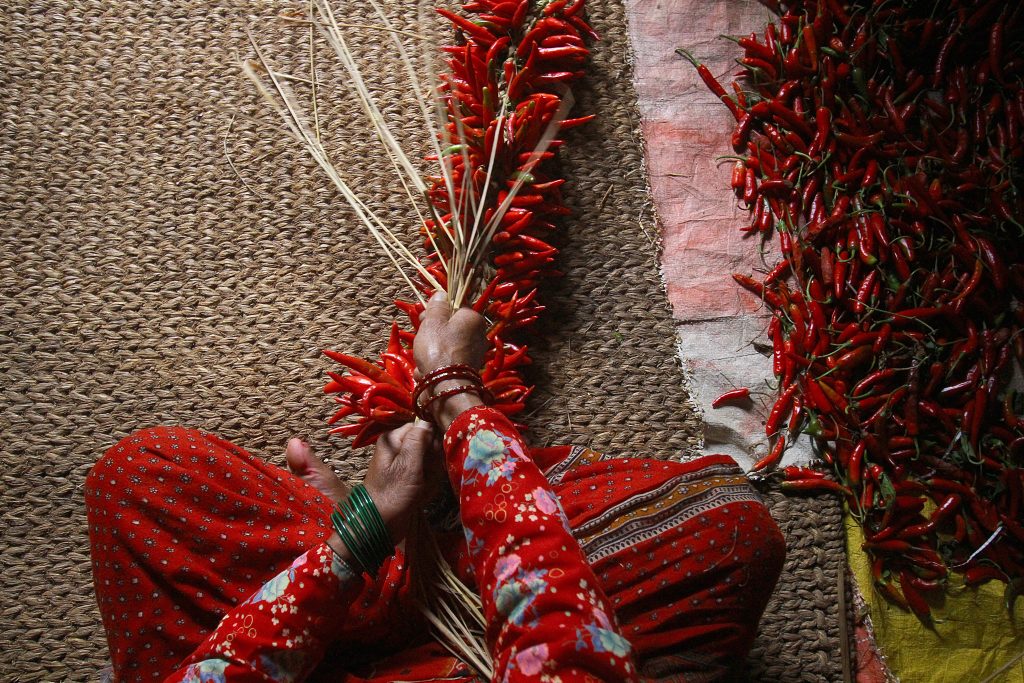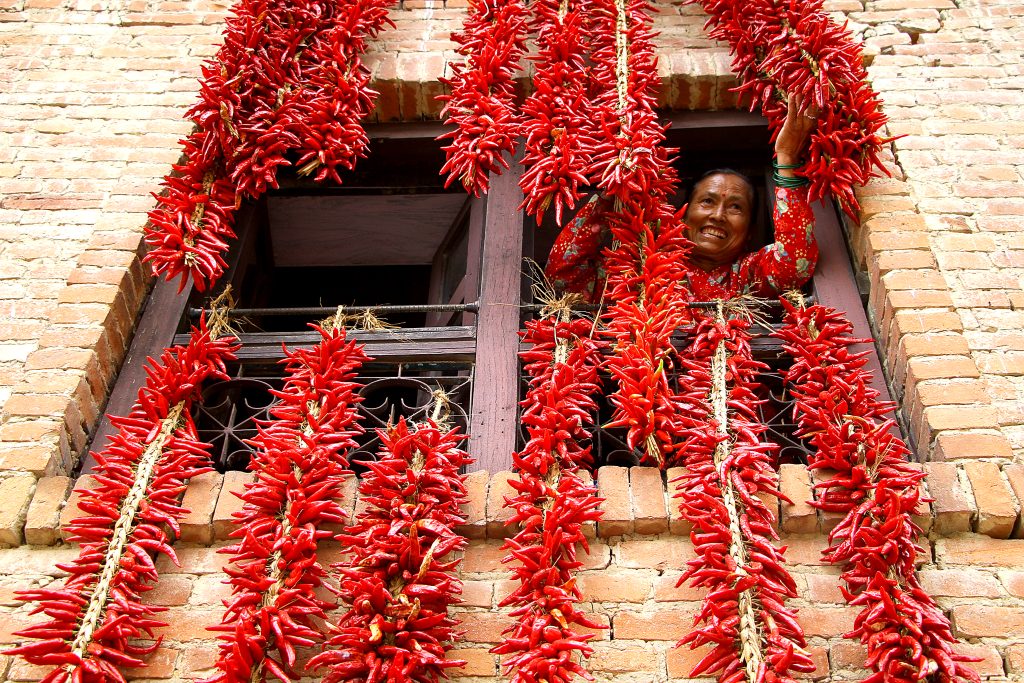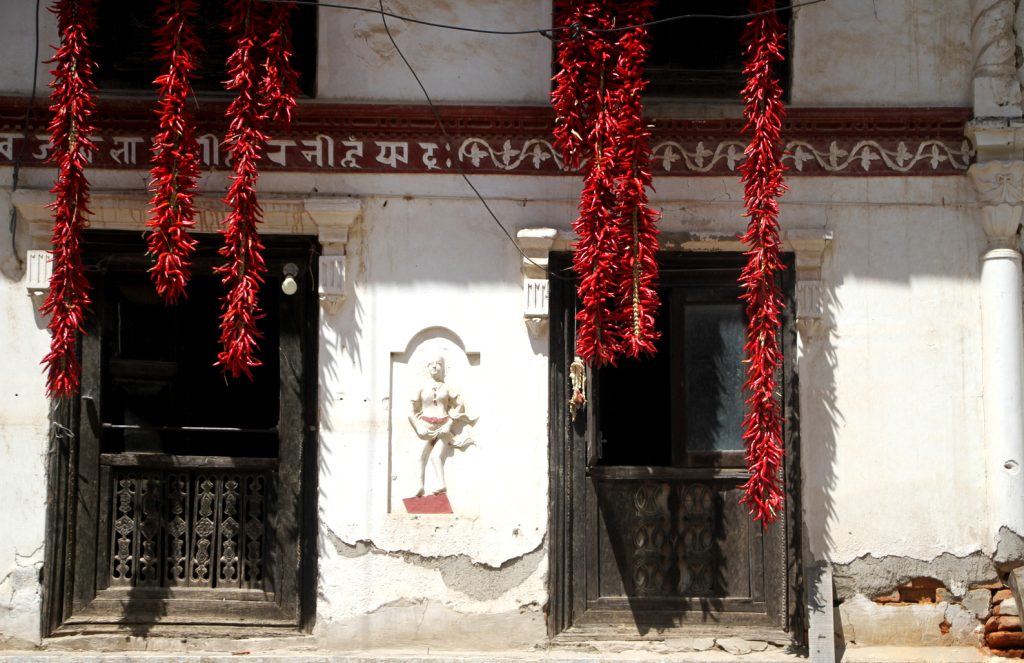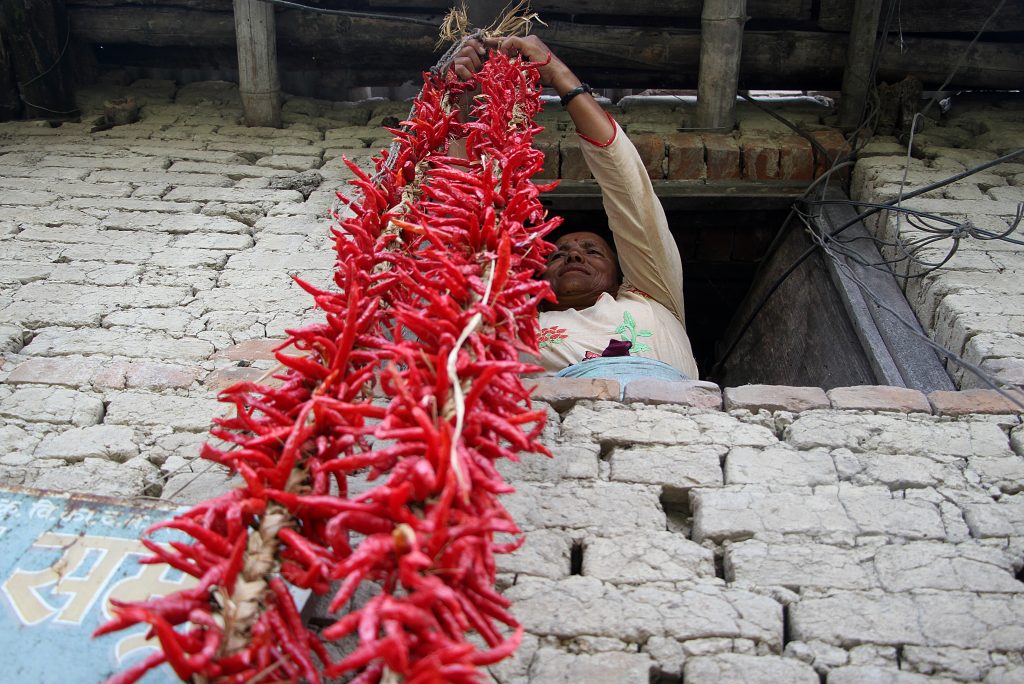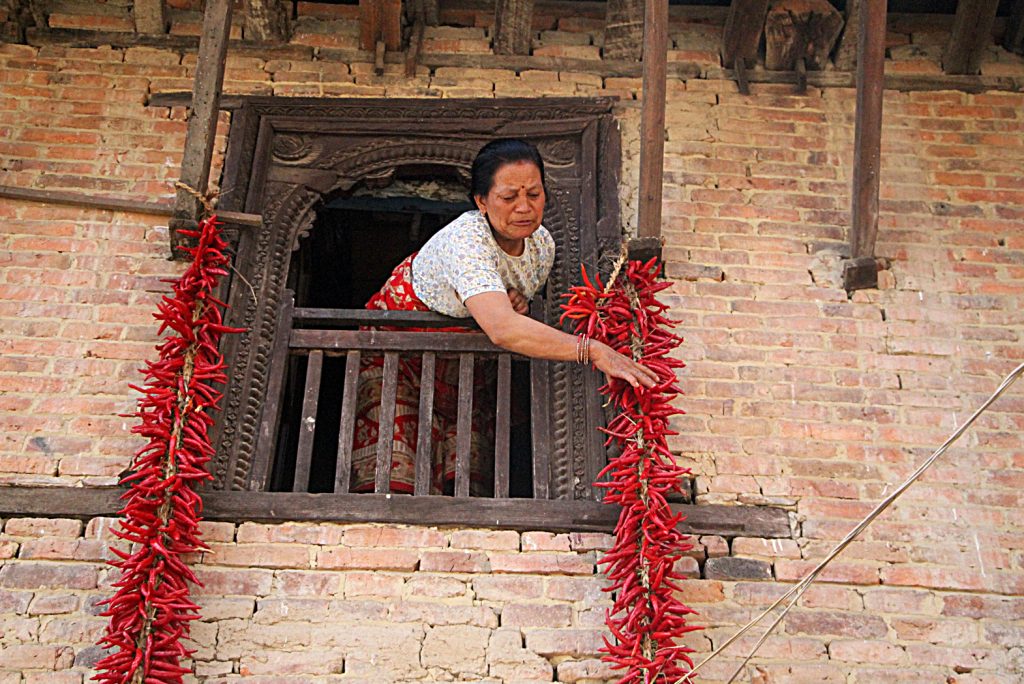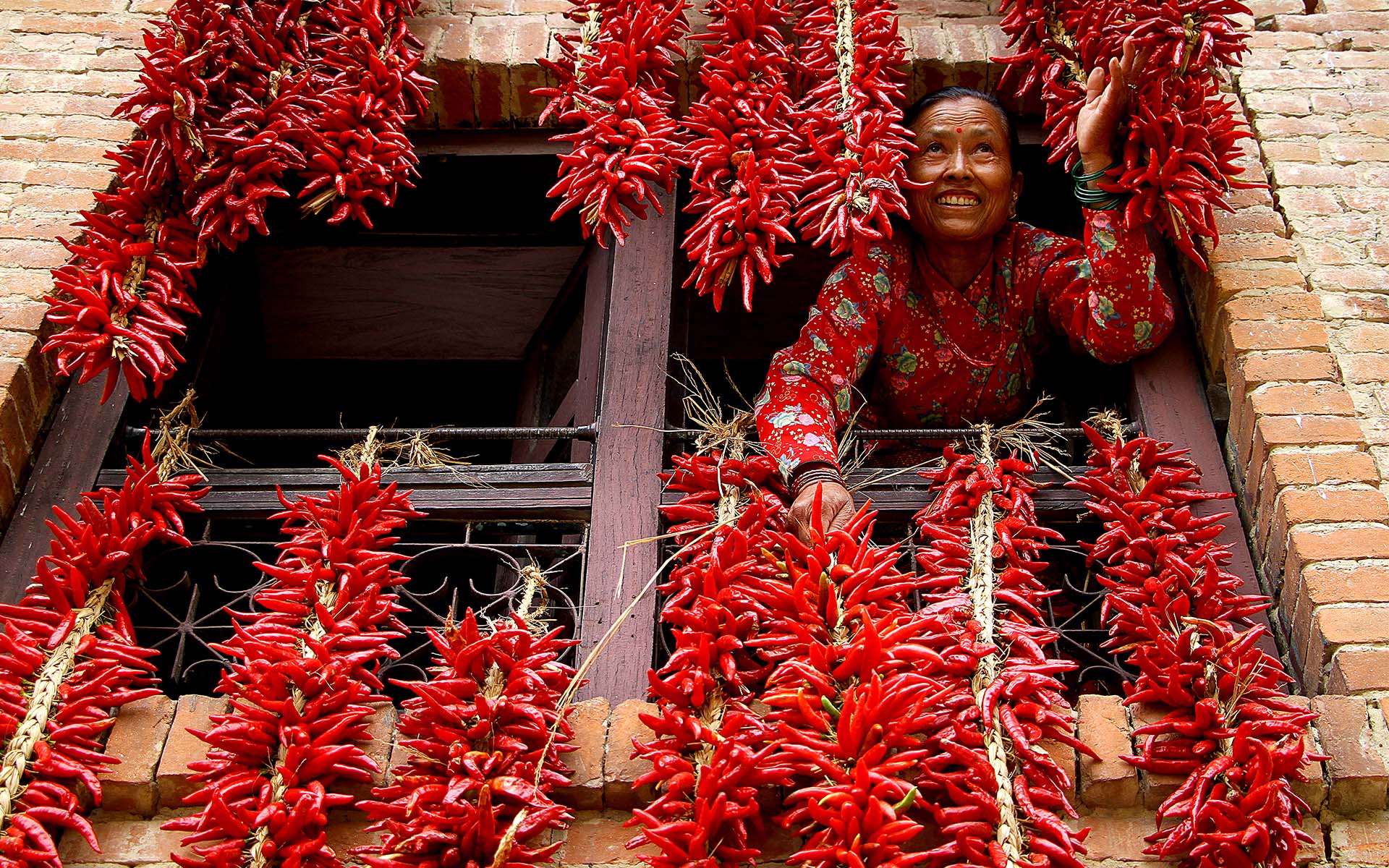
In the old Newa settlement of Khokana, the sight of red chilies strung together and swaying in the breeze turns the village into what looks like a living tapestry of fire and flavor. Some are spread across rooftops, some tucked away in sidewalks, and others strung like garlands across windows and balconies. If you step into Khokana during these months, you would feel as if every corner of the five-hundred-year-old village has been painted red.
The aroma of chilies drying under the sun fills the narrow lanes, wrapping Khokana in a spice-scented embrace. From Shrawan, farmers begin harvesting their chilies, threading them carefully on ropes before hanging them from poles, windows, and terraces. “Chilies are dried like this every year. You’ll find them in almost every house,” says Ashtamaya Maharjan, 62, who has watched the practice pass down through generations.
But the practice is not just about storage or aesthetics– it is livelihood. Farmers of Khokana cultivate chilies both for home use and for sale. Contractors arrive during the season, collecting the fiery produce directly from households. Instead of paying by weight, they often buy according to the size and beauty of the garlands, a tradition as old as the craft itself. “Chili garlands remain a common sight through Shrawan and Bhadra,” explains local farmer Dashram Dangol, “but they begin to disappear before Dashain.”
Home to nearly 1,100 households spread over 3.47 square kilometers, Khokana is known for its deep relationship with spice. Locals relish the sharp heat of piro audhi (fiery taste), often taking bites of raw green chilies with vegetables while working in the fields. For them, chilies are not just food but memory, custom, and preservation. “Drying them this way means we can use chilies throughout the year,” says Dangol.
Monsoon, however, brings challenges. When rains threaten to dampen the drying process, villagers quickly move the garlands to sheltered balconies and windows. “When it rains, we hang them inside. When the sun returns, they go back outside,” laughs Maharjan. This constant cycle of shifting and drying continues until every string of chili has stored the warmth of the sun.
As the days roll into autumn, the garlands gradually vanish, but the memory of their scarlet presence lingers in every kitchen. In Khokana, chilies are more than just a spice; they are a season, a livelihood, and a tradition that colors the village with both fire and beauty.
Pictures:
